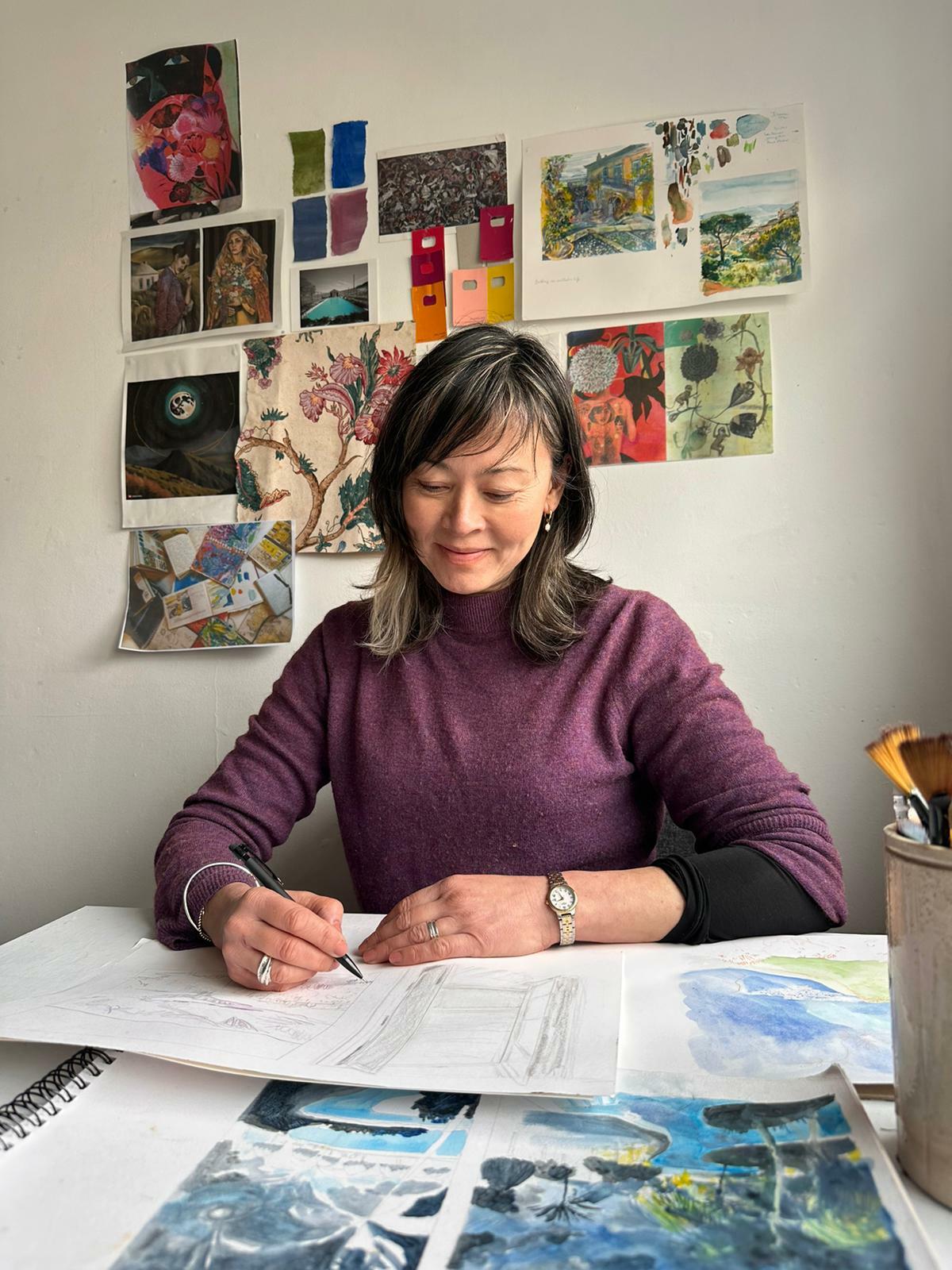Creative Lives is a registered charity that champions community and volunteer-led creative activity, and aims to improve opportunities for everyone to be creative. Here, Creative Lives editor Kelly Donaldson explores why drawing lends itself so well to relaxation and mindfulness - and speaks to two artists who regularly include it in their practice...
From never-ending ‘to-do’ lists to concerns about work, money, family (the list goes on), our need to escape from the stresses of everyday life has never been greater. At Creative Lives we know people find the precious hours spent each week singing in a choir, being part of an amateur dramatics group, gathered around the table at a knitting group, working in a community garden and many more creative activities, can provide respite from responsibilities and a gateway to relaxation. Being creative offers a level of absorption few other activities provide - and drawing and painting in particular can occupy the mind with an all-consuming focus.
“When I’m doing mindful drawing, it’s all I’m thinking about and my other worries just go away,” says artist Marion Cheung, who has worked on a number of projects with Creative Lives. “Drawing requires concentration and time, and you have to give yourself permission to do that. Even though we’re all really busy, we can allow ourselves 10 or 15 minutes of drawing time – and once we do that, it tricks our brain into staying a little bit longer. Before you know it, 30 minutes or an hour has passed, and that’s what I love about the mindfulness of drawing. It also lends itself to painting, because you’re in that flow state.”

While Marion is convinced of the mental health benefits of drawing and painting, citing how relaxed it makes her feel, she points out that this stress-busting activity has one mortal enemy: perfection. “Trying to do a perfect drawing sets a standard that can create stress, so I would park that idea before you start,” she says. “For me, mindfulness is about getting into the zone and immersing yourself, and when I’m there, I feel happy. But if I said to myself that I wanted something to be perfect, that’s not going to make me happy because I’m setting the bar too high and I would tighten up rather than relax.”
Marion likes to start a mindfulness session with a continuous line, keeping the pen or pencil on the page, and seeing where it takes her. This, she feels, is a playful approach that moves away from the self-criticism or judgement that can come when trying to capture how an object or subject looks. Taking a rag or tissue and ‘dirtying’ up the page with ink or charcoal is also quite freeing Marion says, as it means she’s not afraid that the page is so pristine, she’s got to do a fantastic drawing.
“Trying to get as much detail as you can out of a subject can really help with mindfulness too,” she says. “For example, the many different textures on a tree branch. But set aside questions like ‘what is this supposed to look like?’ for a minute because we’re here for fun and enjoyment. Then just see where it goes, and that’s the beauty of it because out of that you might hit upon something and have a lightbulb moment. It can start a train of thought where one thing leads to another.”
Marion credits the Caran d'Ache range for inspiring her to start drawing and painting and sees supplies in general as an important part of creative enjoyment. “Buy some materials that you’re really attracted to and would like to try out,” she says. “I get so much pleasure from using a dip pen because you can add dark and light pressure. I also love the humble Biro, as you can get some lovely shading out of them. And everything in the Caran d'Ache range is gorgeous - I started off with the felt tip pens, which come in the most juicy, bright colours.”

Artist Laura Phillips, who recently received a Creative Lives micro-grant for her doodling project, also loves colour. For her, the idea of ‘doodling’ is often more accessible than ‘drawing’ for people who lack confidence in their own ability. She runs workshops, both in person and online, and encourages people to create mandalas, rainbows and swirls as a simple starting point for relaxation.
“I think because it’s mainly a repetitive action - you’re drawing the swirls over and over - it allows your brain to just focus on that and it hasn’t got space to ruminate over everything else you’ve been worrying about,” says Laura. “That’s why, after doing it for a while, you genuinely feel yourself becoming much calmer. And then afterwards, things that have been bothering you don’t seem quite as intense and you’re in a much clearer space to process what you’re going through.”

Find out more about Creative Lives at www.creative-lives.org, and follow the work of artists Laura Phillips at https://thebarleymoon.ie/doodle-art-workshops/ and Marion Cheung at www.marioncheung.com